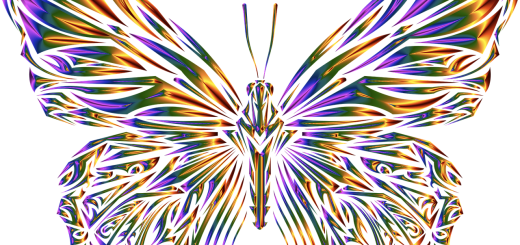How to Help Injured Wildlife in Your Area

Before diving in, please note: This post is for informational purposes only. If you’d like to know more about how we approach topics, feel free to check out our friendly Disclaimer Page.
Hey there, amazing readers! 🖐️ Just a quick note: yes, we know there are a lot of ads here. Trust us, we get it—it’s not the prettiest look, but they help us keep this blog alive and kicking. Those pesky little ads cover the costs of all the behind-the-scenes magic, from hosting and tech stuff to creating content we hope you’ll love.
We’re committed to delivering quality posts, and your support (even just sticking around despite the ads) means everything to us. So, bear with us, and thanks for helping us keep the good vibes rolling. Now, on to the fun stuff! 😉
TRANSLATE BUTTON AT THE END OF THE ARTICLE
A Quick Overview
Helping injured wildlife can be one of the most rewarding experiences you can have.
It’s like giving a second chance to creatures that share our environment.
Whether it’s a bird that’s flown into a window or a turtle trying to cross a busy road, every little effort counts.
In this article, I’ll walk you through what to do when you encounter injured wildlife, from recognizing signs of distress to how you can involve your community in protecting these vulnerable creatures.
So let’s dive into the wonderful world of wildlife rescue!
Understanding the Importance of Wildlife Rescue Efforts
Wildlife plays a crucial role in our ecosystem.
They contribute to biodiversity, help with pollination, and control pests naturally.
However, as urban areas expand and natural habitats shrink, animals face increasing threats.
Injured wildlife is often a sign of a larger issue, whether it’s habitat destruction, pollution, or human interference.
When we step in to help injured animals, we’re acting as stewards of the environment.
This is about more than just one animal; it’s about restoring balance in nature.
By rescuing and rehabilitating wildlife, we can foster healthier ecosystems.
Plus, it brings communities together, sparking conversations about wildlife conservation and biodiversity.
Moreover, when we engage in wildlife rescue, we educate ourselves and others about the challenges facing these creatures.
It’s a way to connect with nature and develop empathy for all living beings.
Just think of how inspiring it can be to share stories of wildlife recovery with friends and family!
Recognizing Signs of Injured Wildlife in Your Area
Knowing what to look for is essential.
Here are some signs that an animal might be injured:
Visible wounds: Look for blood or open sores.
Abnormal behavior: If an animal seems disoriented or is acting strangely, it might be hurt.
Limping: An animal that isn’t moving normally could be in pain.
Hiding: If you spot an animal that usually roams freely but is hiding, it might be a sign of distress.
Unusual vocalizations: Listen for cries that seem out of the ordinary for that species.
It’s important to remember that some animals will instinctively hide their injuries as a survival tactic.
If you suspect something’s wrong, it’s better to investigate further.
I once spotted a small rabbit sitting oddly in my yard.
At first, I thought it was just resting, but then I noticed it was breathing heavily and not moving much.
It turned out it had a leg injury, and I was able to get it the help it needed.
Safe Ways to Approach an Injured Animal
Approaching an injured animal can be tricky.
Here are some tips to do it safely:
Stay calm: Animals can sense fear and anxiety.
Discover "Dog Care: Learning How to Care for Your Furry Friend 🐾"
Approach slowly and quietly.
Observe from a distance: Before getting too close, watch from afar to assess the situation.
Use protective gear: If possible, wear gloves or use a towel to protect yourself.
Wild animals can bite or scratch when frightened.
Speak softly: Your voice can be soothing.
Talk gently to the animal as you approach.
Avoid direct eye contact: This can be perceived as a threat.
I remember encountering an injured bird once.
I took a deep breath, spoke softly, and managed to wrap it in a towel gently.
That little guy calmed down almost immediately, which made the rescue much easier!
Essential Supplies for Helping Wildlife in Distress
When you’re ready to help an injured animal, having the right supplies can make all the difference.
Here’s a handy list of items you might need:
Towel or blanket: Great for wrapping animals securely.
Cardboard box: Ideal for transporting small animals.
Make sure it has ventilation holes!
Gloves: Protect yourself when handling wildlife.
First aid kit: You can include antiseptic wipes, gauze, and tape.
Bottled water: Animals can become dehydrated, especially if they’ve been injured for a while.
Always keep these items handy!
You never know when you might encounter an animal in need.
I keep a little “wildlife rescue kit” in my car just in case, and it has come in handy more than once.
When to Call a Wildlife Rehabilitation Expert
Sometimes, despite our best efforts, we may not be equipped to handle an injured animal.
Here are some situations where it’s best to call a professional:
Severe injuries: If an animal has a broken bone or deep wounds, it needs expert treatment.
Orphaned young: Baby animals require specialized care that can be tricky to provide at home.
Dangerous animals: If the injured animal is large or potentially dangerous, it’s better to let the pros handle it.
Persistent distress: If an animal is in a state of shock or panic, a wildlife rehabilitator can safely manage the situation.
I once found a fawn alone in my backyard.
I thought I could help, but it was best to call a local wildlife expert who knew how to handle young deer.
They provided the necessary care and eventually released the fawn back into the wild!
How to Handle Common Injured Animals Safely
Different animals require different approaches.
Here’s how to handle a few common injured wildlife:
Birds: Wrap them gently in a towel, keeping their wings secure.
Place them in a box for transport.
Rabbits: Carry them in a box lined with soft fabric.
Don’t use your hands, as they can kick hard.
Turtles: If they’re injured on the road, carefully move them to the side in the direction they were heading.
Use a towel to protect yourself from biting.
Squirrels: If you encounter an injured squirrel, place it in a box lined with soft cloth and keep it in a quiet, dark place.
Remember, these animals can be scared and might bite or scratch.
Approach with care and patience.
I’m always amazed at how resilient these creatures can be!
Tips for Transporting Injured Wildlife to Safety
When it’s time to transport an injured animal, here are a few tips:
Keep the animal calm: A quiet, dark box can help reduce stress.
Avoid sudden movements: Move slowly and carefully to avoid startling the animal.
Secure the box: Make sure the lid is on tight so the animal can’t escape during transport.
Drive carefully: Avoid sudden stops or turns, and keep the music low.
Have a destination in mind: Know where you’re taking the animal.
Research local wildlife rehabilitation centers beforehand.
I once took a raccoon that had been hit by a car to a nearby rehab center.
I made sure the box was secure and kept my speed steady, making the trip less stressful for both of us.
Creating a Wildlife-Friendly Environment at Home
We all can make our homes a sanctuary for wildlife.
Here are ways to do that:
Plant native plants: These provide food and shelter for local wildlife.
Avoid chemicals: Using pesticides harms not just pests but also beneficial insects and animals.
Create shelter: Birdhouses, bat boxes, and brush piles can provide safe spaces.
Install a pond: A small water feature can attract wildlife, providing them with a drinking source.
Educate your family: Teach your children about respecting wildlife and observing from a distance.
By making our homes wildlife-friendly, we contribute to the health of our local ecosystems.
I’ve had the joy of seeing various birds and butterflies in my garden, all thanks to a few simple changes!
The Role of Local Communities in Wildlife Protection
Communities play a vital role in wildlife protection.
Here’s how we can come together:
Organize clean-up events: Keeping habitats clean ensures wildlife has safe places to thrive.
Share information: Use social media or community boards to share tips and resources.
Support local wildlife organizations: Donate time or resources to groups working for wildlife.
Host workshops: Educate the community about local wildlife and how to help them.
I love participating in community clean-ups in my area.
It’s a great way to meet like-minded people while making a difference!
Educating Others on Wildlife Care and Conservation
Education is key to wildlife conservation.
Here’s how you can spread the word:
Share your experiences: Talk about your encounters with injured wildlife.
Create informative materials: Hand out flyers or post on social media.
Host community talks: Invite local experts to discuss wildlife topics.
Engage kids: Teach children about the importance of wildlife and conservation through fun activities.
I’ve found that storytelling resonates deeply.
I often share my wildlife rescue stories at local schools, and it’s heartwarming to see kids engage and show interest!
Fun Ways to Fundraise for Wildlife Rescue Groups
Fundraising can be a fun and impactful way to support wildlife rescue.
Here are some ideas:
Host a bake sale: Everyone loves treats, and it’s a simple way to raise funds.
Organize a fun run: Get your community involved with a charity run.
Art auctions: Encourage local artists to donate their work for an auction.
Pet photo contest: Charge a small fee for entries and let the community vote.
I once participated in a charity run for wildlife rescue, and it was such a blast!
Not only did we raise money, but we also got to enjoy a day outdoors with fellow animal lovers.
Celebrating Success Stories in Wildlife Rehabilitation
Nothing inspires more than a success story!
Sharing these experiences can motivate others to get involved.
Here are some ways to celebrate:
Social media shout-outs: Post before-and-after photos of rescued animals.
Community events: Host gatherings to share success stories and inspire others.
Create a blog or newsletter: Document and share your rescue efforts and successes.
After I helped a group of orphaned squirrels, I wrote a blog post detailing their journey to recovery.
The outpouring of support and interest was incredible, and it inspired others to get involved!
Conclusion
Helping injured wildlife is not just a noble endeavor; it’s a way to connect with our environment and nurture a sense of community.
By recognizing signs of distress, safely approaching animals, and sharing our stories, we can make a significant difference.
So, whether you’re planting native plants or organizing a community fundraiser, every little bit helps.
Let’s keep the conversation going and inspire more people to join the wildlife rescue movement.
After all, every creature deserves a fighting chance!

The Enlightenment Journey is a remarkable collection of writings authored by a distinguished group of experts in the fields of spirituality, new age, and esoteric knowledge.
This anthology features a diverse assembly of well-experienced authors who bring their profound insights and credible perspectives to the forefront.
Each contributor possesses a wealth of knowledge and wisdom, making them authorities in their respective domains.
Together, they offer readers a transformative journey into the realms of spiritual growth, self-discovery, and esoteric enlightenment.
The Enlightenment Journey is a testament to the collective expertise of these luminaries, providing readers with a rich tapestry of ideas and information to illuminate their spiritual path.
Our Diverse Expertise 🌟
While our primary focus is on spirituality and esotericism, we are equally passionate about exploring a wide range of other topics and niches 🌍📚. Our experienced team is dedicated to delivering high-quality, informative content across various subjects ✨.
To ensure we provide the most accurate and valuable insights, we collaborate with trusted experts in their respective domains 🧑🏫👩🏫. This allows us to offer well-rounded perspectives and knowledge to our readers.
Our blog originally focused on spirituality and metaphysics, but we’ve since expanded to cover a wide range of niches. Don’t worry—we continue to publish a lot of articles on spirituality! Frequently visit our blog to explore our diverse content and stay tuned for more insightful reads.





